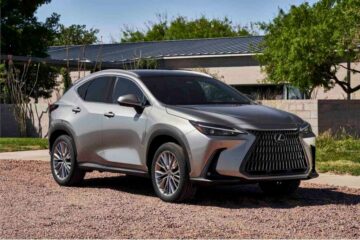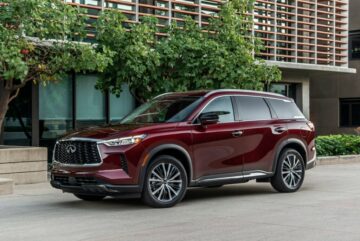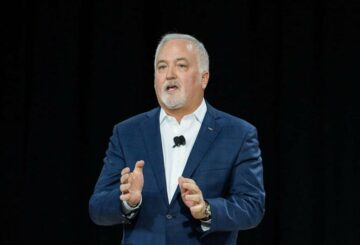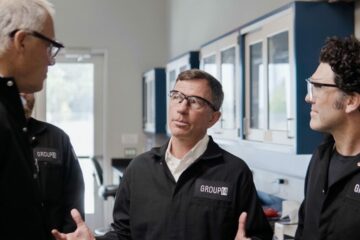If you’re looking to buy a new vehicle in the coming weeks you may be in for some good news. The average price consumers paid in March tumbled for the first time in 20 months, and there are signs that the downward trend could continue for some time to come.

Last month’s 1.1% decline averaged $550 on the typical new vehicle. The slide appears to reflect the decline in bargaining power that automakers and their dealers have as showroom inventories increase, according to Kelley Blue Book.
“Right now, in-market consumers are finding more inventory, more choice and dealers more willing to deal, at least with some brands,” KBB researcher Rebecca Rydzewski said in an analysis of last month’s sales results.
Too early to celebrate
But, at $48,008, motorists may not yet want to celebrate, with March still seeing near-record average transaction prices — what buyers paid after factoring in discounts, surcharges and options. By comparison, the ATP was $38,162 in March 2020, just before COVID-19 struck and lockdowns sent the U.S. auto industry into a tailspin.
In the first months of the pandemic, new vehicle prices actually tumbled. April 2020’s average came in at $38,060, a 0.3% decrease. And the downward trend continued through late that year.
But then something unexpected happened. Where industry analysts feared the pandemic would lead to the lowest sales seen in the U.S. since the Great Recession a decade earlier, consumer demand actually rebounded late in 2020.

Chip shortage kicks off an inventory crisis
It was something automakers weren’t prepared for. If anything, they’d slashed orders with suppliers, notably including the semiconductors that have become an essential part of modern vehicles. Chip manufacturers weren’t able to keep up as auto sales bounced back. As a result, automotive production was routinely disrupted, leading to severe inventory shortages.
On average, dealers had barely a third their normal vehicles in stock last year, according to J.D. Power and other analysts. Not only did manufacturers slash their normal incentive programs but also dealers began tacking on surcharges. For popular vehicles like the Kia Telluride, TheDetroitBureau.com reported, it wasn’t unusual to see retailers demanding $5,000, even $10,000 above sticker. Figures above $50,000 were widely reported for limited-volume models, such as the Chevrolet Corvette.
Dealers typically measure inventory in terms of days’ supply. Where something around 60 days is considered normal, industry-wide numbers dipped below 20 days at the worst of the semiconductor shortage, Toyota at one point reporting a figure of barely a single day’s supply.
Dealer inventories rebounding

Though there are still occasional chip-related production problems, inventories bounced back to a 56-day supply in March, according to Cox Automotive.
That’s led to a surge in sales, despite higher prices and increased interest rates.
“During March, we saw sales surpass the 1-million mark for a 30-day period for the first time since early September 2021,” said Cox senior economist Charlie Chesbrough. “Higher sales have been boosted, in part, by improving inventory, which has been running at around 1.8 million or so for the past several weeks.”
Incentives begin to return
Strong consumer demand has helped the industry avoid the sort of high-dollar incentives seen pre-pandemic, but the givebacks are on the rise — especially for less popular models. They averaged 3% of ATPs in February, rising to 3.2% in March. But that’s still well off from the average 8.4% buyers saw two years ago, according to KBB.
Meanwhile, dealers are commanding premiums on fewer and fewer products, though there are a few exceptions, such as the new Corvette E-Ray hybrid.

Comparing average transaction prices from March 2023 and the same month three years ago can be a bit misleading. Luxury products have grown in their share of the overall U.S. new vehicle market, driving up average prices.
When it comes to mainstream vehicles, transaction prices actually dropped as much as 3.8% for some familiar brands, such as Chevrolet, Dodge, Ford, Hyundai and Volkswagen in March.
Lower transaction prices — but higher interest rates
While motorists may be getting better deals, they aren’t necessarily saving money once they drive home, however, due to repeated interest rate increases ordered by the Federal Reserve. The average annual percentage rate for a new vehicle jumped from 4.5% to 7% between March 2022 and March 2023, according to tracking firm Edmunds.
So, even with a slight dip in average transaction prices, the typical American new vehicle purchase made in March of this year carries a record monthly cost of $730, reported Edmunds.
Measured another way, 17% of buyers are now spending over $1,000 a month, up from barely 5% four years ago.
- SEO Powered Content & PR Distribution. Get Amplified Today.
- Platoblockchain. Web3 Metaverse Intelligence. Knowledge Amplified. Access Here.
- Source: https://www.thedetroitbureau.com/2023/04/new-vehicle-prices-slide-after-two-years-of-record-jumps/
- :has
- :is
- :not
- :where
- $UP
- 000
- 1
- 2%
- 20
- 2020
- 2021
- 2022
- 2023
- 8
- a
- Able
- above
- According
- actually
- After
- also
- American
- an
- analysis
- Analysts
- and
- annual
- Another
- April
- ARE
- around
- AS
- At
- auto
- automakers
- automotive
- average
- avoid
- back
- basis
- BE
- become
- been
- before
- began
- begin
- below
- Better
- between
- Bit
- Blue
- book
- Boosted
- brands
- but
- buy
- buyers
- by
- CAN
- car
- celebrate
- Charlie
- Chevrolet
- chip
- choice
- COM
- come
- coming
- coming weeks
- comparison
- considered
- consumer
- Consumers
- continue
- continued
- Cost
- could
- COVID-19
- Cox
- Days
- deal
- Deals
- decade
- Decline
- decrease
- Demand
- demanding
- Despite
- DID
- Dip
- discounts
- Dodge
- downward
- drive
- driving
- dropped
- Earlier
- Early
- Economist
- especially
- essential
- Even
- Falling
- familiar
- February
- Federal
- federal reserve
- few
- Figure
- Figures
- finding
- Firm
- First
- first time
- For
- Ford
- four
- from
- getting
- good
- great
- grown
- happened
- happy
- Have
- helped
- helps
- higher
- Home
- However
- HTTPS
- Hybrid
- Hyundai
- improving
- in
- Incentive
- Incentives
- Including
- Increase
- increased
- Increases
- industry
- interest
- INTEREST RATE
- Interest Rates
- into
- inventory
- IT
- J.D. Power
- jpg
- jump
- jumps
- just
- Keep
- Kelley
- Kia
- Kicks
- Last
- Last Year
- Late
- lead
- leading
- Led
- like
- lockdowns
- looking
- Luxury
- made
- Mainstream
- Manufacturers
- March
- march 2020
- mark
- Market
- max-width
- May..
- measure
- million
- models
- Modern
- money
- Month
- monthly
- months
- more
- nearly
- necessarily
- New
- news
- normal
- notably
- now
- numbers
- occasional
- of
- on
- ONE
- only
- Options
- or
- orders
- Other
- over
- overall
- paid
- pandemic
- part
- past
- payment
- percentage
- period
- plato
- Plato Data Intelligence
- PlatoData
- Point
- Popular
- power
- prepared
- price
- Prices
- problems
- Production
- Products
- Programs
- purchase
- Push
- Rate
- Rates
- reasons
- recession
- record
- reflect
- repeated
- Reported
- Reporting
- researcher
- Reserve
- result
- Results
- retailers
- Rise
- rising
- routinely
- running
- s
- Said
- sales
- same
- saving
- seeing
- semiconductor
- Semiconductors
- senior
- September
- several
- severe
- Share
- shortage
- shortages
- significantly
- Signs
- since
- single
- Slide
- So
- some
- something
- Spending
- Still
- stock
- such
- suppliers
- supply
- surge
- surpass
- terms
- that
- The
- their
- There.
- they
- Third
- this
- this year
- three
- Through
- time
- to
- toyota
- Tracking
- transaction
- Trend
- typical
- typically
- u.s.
- Unexpected
- unusual
- vehicle
- Vehicles
- volkswagen
- was
- Way..
- we
- Weeks
- WELL
- were
- What
- which
- widely
- willing
- with
- Worst
- would
- year
- years
- you
- zephyrnet












